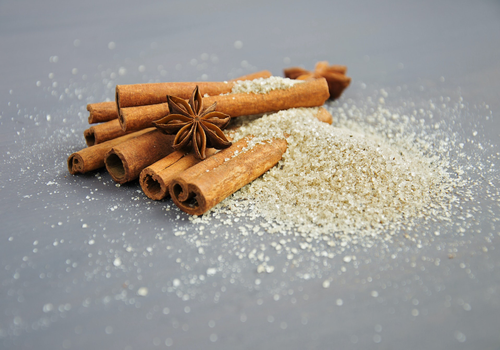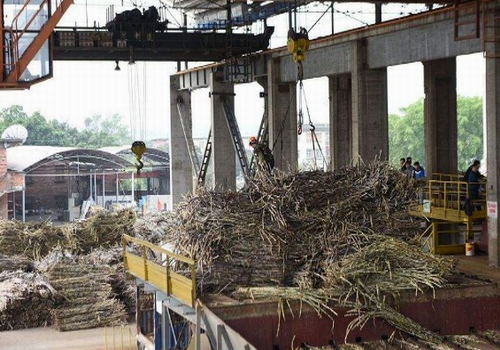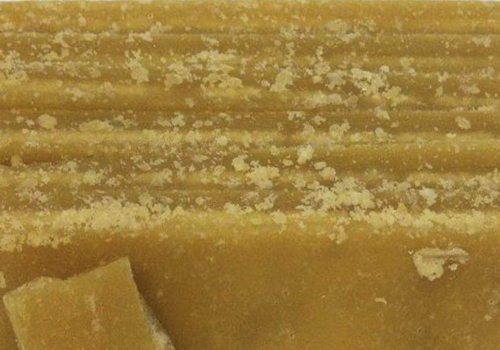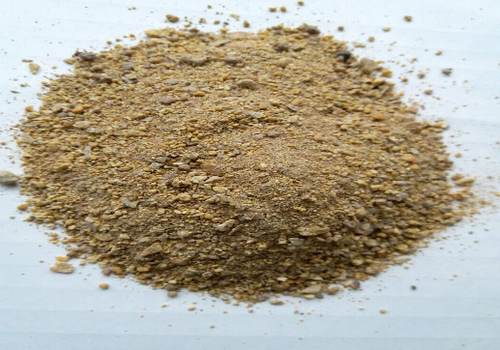Sucrose accounts for 65-70% of the world's sugar production, and the production process requires a lot of steam and electricity, and produces a lot of residues at different stages of production.


By-products and ingredients of sugar/sucrose.
In the process of sugarcane processing, in addition to sugar, sugar and other major products, there are sugar cane slag, sludge, black sucrose molasses and other 3 major products.
Sugar cane slag : .
Sugar cane slag is the fiber residue after sugar cane juice is extracted. Sugar cane slag is well used in the production of organic fertilizer. But because sugar cane slag is almost pure cellulose, almost no nutrients, is not a viable fertilizer, so it is necessary to add other nutrients, especially nitrogen-rich substances such as green matter, cow dung, pig manure and so on to break it down.
Molasses : .
Molasses are salts separated from C-grade sugars during molasses centriforation. The yield per ton of molasses is between 4 and 4.5 per cent. It was sent out of the factory as scrap. However, molasses is a good and fast source of energy for various microorganisms and soil life in compost heaps or soils. Molasses have a 27:1 carbon-to-nitrogen ration and contain about 21% soluble carbon. It is sometimes used to bake or produce ethanol as an ingredient in cattle feed and is also a molasses-based fertilizer.
Percentage of nutrients in molasses.
|
No. |
Nutrition. |
% |
|
1 |
Sucrose |
30-35 |
|
2 |
Glucose and fructose |
10-25 |
|
3 |
Water |
23-23.5 |
|
4 |
Gray |
16-16.5 |
|
5 |
Calcium and potassium |
4.8-5 |
|
6 |
Non-sugar compounds |
2-3 |
|
7 |
Other mineral content |
1-2 |
Sugar factory filter mud: .
Filter mud, the main residue of sugar production, is the residue of sugar cane juice treatment through filtration, accounting for 2% of the weight of sugar cane crushing. It is also known as sucrose filter mud, sucrose slag, sucrose filter cake, sugar cane filter mud, sugar cane filter mud.
Sludge can cause significant pollution and, for some sugar mills, is considered a waste and can cause management and final disposal problems. If disposed of at will it can pollute the air and groundwater. Therefore, the treatment of mud is a top priority for sugar mills and environmental protection departments.
Application of mud filter: In fact, due to the large amount of organic and mineral elements required for plant nutrition, filter cakes have been used as fertilizer in Brazil, India, Australia, Cuba, Pakistan, Taiwan, South Africa, Argentina and other countries. It is used as a complete or partial substitute for mineral fertilizers for sugar cane cultivation and other crops. In addition, sludge is the basic raw material for the production of bio-soil, which is composted from liquid waste residues produced from distillery operations.


The value of mud as a composting material.
The ratio of sugar production to filter mud (65% water content) is about 10:3, i.e. 10 tons of sugar production can produce 1 ton of dry filter mud. Total global sugar production in 2015 was 117.2 million tonnes, with Brazil, India and China accounting for 75 per cent of world production. It is estimated that India produces about 520 million tons of filter mud per year. Before we know how to manage sludge slag environmentally, we should learn more about its composition in order to find the best solution!
The physical properties and chemical composition of sugarcane filter mud: .
|
No. |
Parameters. |
Value. |
|
1. |
Ph. |
4.95 % |
|
2. |
Total solids. |
27.87 % |
|
3. |
Total volatile solids. |
84.00 % |
|
4. |
C.O.D. |
117.60 % |
|
5. |
B.O.D. (temperature 27 degrees C, 5 days) |
22.20 % |
|
6. |
Organic carbon. |
48.80 % |
|
7. |
Organic matter. |
84.12 % |
|
8. |
Nitrogen. |
1.75 % |
|
9. |
Phosphorus. |
0.65 % |
|
10. |
Potassium. |
0.28 % |
|
11. |
Sodium. |
0.18 % |
|
12. |
Calcium. |
2.70 % |
|
13. |
Sulfate. |
1.07 % |
|
14. |
Sugar. |
7.92 % |
|
15. |
Wax and fat. |
4.65 % |
From above, in addition to 20-25% organic carbon, the mud also contains a considerable amount of trace and micronutrients. The mud is also rich in potassium, sodium and phosphorus. It is rich in phosphorus and organic sources with large moisture content, which makes it a valuable compost fertilizer! Whether unprocessed or processed. Processes used to increase fertilizer value include composting, microbial treatment, and mixing with distillery wastewater . . .
Organic fertilizer manufacturing process for sludge and molasses.
Compost.
First sugar filter mud (87.8%), carbon material (9.5%) such as grass powder, grass powder, germ bran, wheat bran, safflow, sawdust, etc., molasses (0.5%), mono-superphosphate The acid (2.0%), sulfur mud (0.2%), etc. are thoroughly mixed and stacked about 20 meters above the ground, 2.3-2.5 meters wide, and about 2.6 meters high in semicircular height. Tip: The height width of the windway should match the parameter data of the compost truck you are using.
Give enough time for the pile to ferment thoroughly and rot, a process that lasts about 14-21 days. During the composting process, stir over the pile and spray water every three days to maintain 50-60% moisture content. The dumper ensures the uniformity and thorough mixing of the piles during the composting process. Tip: The dumper is used for uniform mixing and rapid back-dumping, and is an essential equipment in the production process of organic fertilizer.
Note: If the moisture content is too high, the fermentation time needs to be extended. Conversely, low water content may lead to incomplete fermentation. How do I tell if the compost is rotten? The rotten compost is characterized by loose shape, gray-brown, odorless, and the compost is consistent with the temperature of the surrounding environment. The moisture content of compost is less than 20%.
Granulation.
The rotten compost is then sent to the granulation process - a new organic fertilizer granulation machine.
Drying.
Here, molasses (0.5% of the total raw material) and water are sprayed before entering the dryer to form particles. The tumble dryer uses physical drying technology to form particles at temperatures of 240-250 degrees C and reduce moisture content to 10%.
Screening.
After granulation, send to the screening process - roller sieve extender. The average size of bioferts should be 5mm diameter for particle molding and use. Oversized particles and undersized particles return to the granulation process.
Packaging.
Size-compliant particles are sent to the packaging process - automatic packaging machine, through automatic filling of bags, the final product is sent to different places.
The characteristics and functions of the organic fertilizer of the filter mud.
- High resistance to disease:
In the process of sludge treatment, microorganisms multiply rapidly, producing large quantities of antibiotics, hormones and other specific metabolites. Applying fertilizer to soil can effectively inhibit the growth of pathogens and weeds and improve the resistance of pests and diseases. Wet sludge is not treated and can easily pass bacteria, weed seeds and eggs to crops, affecting their growth.
- High fattening:
Since the fermentation period is only 7-15 days, as far as possible to retain the filter mud nutrients, with the decomposition of microorganisms, it is difficult to absorb material into effective nutrients. Mud-filtered organic fertilizer can quickly replenish the nutrients needed for crop growth and improve fertilizer efficiency.
- Improve soil fertility and improve soil:
If the long-term use of a single fertilizer, will gradually consume soil fertility, so that soil microorganisms reduce, so that the enzyme content is reduced, colloidal damage, resulting in soil solidification, acidification and salinization. Filtered mud organic fertilizer can reunifies sand, loosens clay, inhibits pathogens, restores soil micro-ecological environment, improves soil permeability, and improves the ability to maintain moisture and nutrients.
- Improving crop yields and quality:
The nutrients of filter mud organic fertilizer are absorbed through the developed root system and strong leaf strains of the crop, which promotes the germination, growth, flowering, germination and maturation of the crop. It significantly improves the appearance and color of agricultural products and increases the sweetness of sugar cane and fruit. Mud bio-organic fertilizer can be used as a basic fertilizer, in the growing season, a small amount of application can meet the needs of crop growth, to achieve the management and use of land purposes.
- Widely used:
Sugar cane, bananas, fruit trees, melons, vegetables, tea, flowers, potatoes, tobacco, feed, etc.
Post time: Sep-22-2020

